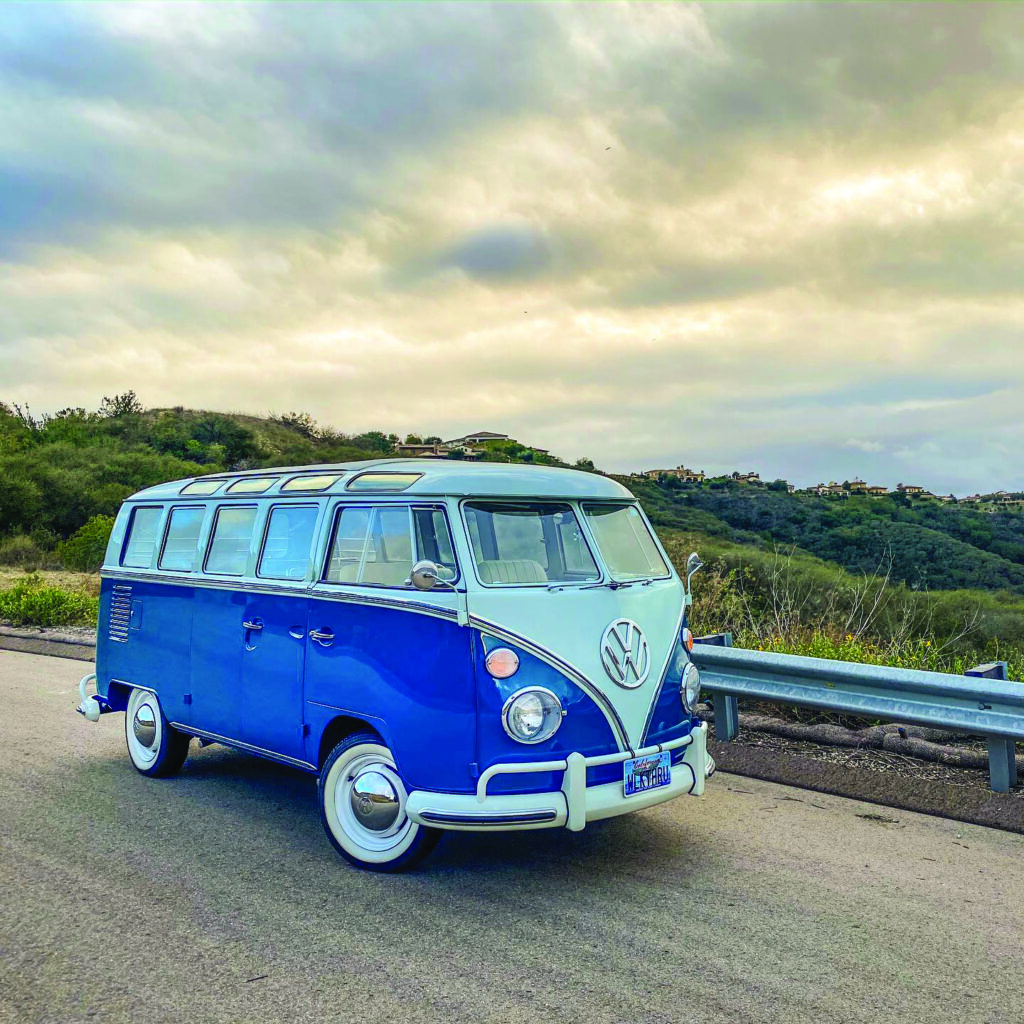Electric motors give new life to classics
— Originally published in the Summer 2022 edition of the Generator
Back in 1974, the parking brake on a Volkswagen bus failed and it rolled down a hill.
Right into an elm tree.

Photos courtesy of EV West.
The owners pulled it back to their property where it sat for more than 40 years. Then they asked Michael Bream if he’d like to have it.
“It looked really bad,” he said. “So of course we were interested.”
Bream took the 1964 VW bus back to his business, EV West, in San Marcos, Calif. There, he and his team fixed the frame as best they could. They removed the old combustion engine, and replaced it with an 88-kilowatt AC motor (about 120 horsepower). Then, they added Tesla batteries.
It went into the business’ vehicle pool and employees put about 40,000 miles on it in a few years.
“Because it came in so messed up and the fact that it’s now so capable, it’s become very endearing for the employees and the people around here,” Bream said. “Everybody just loves the Rust Bus.”
The bus is one of many vehicles Bream has converted to run on all-electric power. He worked on Tony Hawk’s Corvette Stingray this summer. Add to the mix a 1951 Chevy pickup, a few Porche conversions, and several more VW buses.
But he doesn’t do it for the environment. Or because gas prices are so high. It’s not a political statement.
He does it to save the classics.
“We just wanted to highlight the performance, highlight the fun,
highlight the fact that you can save a classic car like this bus.”
(continued below)





HOT ROD CULTURE
Bream’s interest in cars stems from his father.
“My dad grew up in West Hollywood in the ’50s and ’60s and there was a lot of hot rod culture,” he said.
He began racing cars and did that for about 5 years. While that was a lot of fun, Bream is an engineer, and decided he wanted to step things up a notch.
“I just wanted something more cerebral,” he said. “I wanted to push the limits a little bit more.”
He decided to build an electric race car and compete in the Broadmoor Pikes Peak International Hill Climb — an annual race to the summit of Pike’s Peak. The event is the second-oldest motorsports race in America. It began in 1916 and was halted only during both world wars.
The 12.42-mile course has 156 turns. It begins at about 9,300 feet and ends 14,115 feet above sea level.
Bream and his father built their electric car over a year and a half and were ready to compete in 2012. They broke a record in their class and beat out cars that were funded by multi-million dollar companies. The David-versus-Goliath win led to news stories. His name began circulating among car enthusiasts.
“I think that was the major impetus for what is now EV West,” Bream said.
SAVING THE CLASSICS
Bream’s business has continued to grow as more and more people decide to save their classics by converting them to electric power.
Again, Bream said he and his customers don’t have an altruistic motive for doing so. They enjoy the instant power and low maintenance that comes with an electric motor.
“We’re like a bunch of kids having fun with classic cars that drive much better than they did 50 years ago.”
Plus, gas is a finite resource and gas engines have a lot of moving parts and therefore a lot of potential problems. The problem is compounded in classics because of their age.
“But you put this electric drive line in it and going back and forth across the United States is no problem,” Bream said.
It wasn’t a problem for his friend, Jack Smith, who traveled back and forth across America in an electric vehicle as he recreated “Horatio’s Drive.” (Read more about Smith HERE)
Bream learned about that first trip across America when Smith gave him a book about the journey.
“I was so fascinated by it,” he said. “It’s a snapshot in time when something seemed so unobtainable. To drive across the country seemed impossible.”
And so, when Smith wanted to recreate the journey in a unique vehicle, Bream offered the Rust Bus.
The vehicle was up to the task. And while Smith’s adventure is now complete, the bus still has work to do. It’s headed to Canada this month to join other vintage VWs on a trip from Canada to Mexico. It will most likely amaze and delight those who come over for a closer look. Just like it did on the Smith’s trip.
“It’s fun to have something that was the total peak of unreliability and then doing the exact opposite with it — making it something that can drive around the United States with virtually zero maintenance.”

